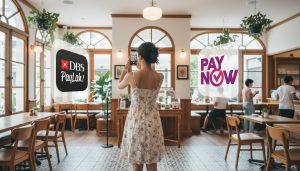After the pandemic, there was a clear surge in people using QR codes in their daily lives. And when it comes to QR payments, more consumers are using it to pay, preferring it over credit cards.
This shift is not by chance, as it comes alongside government pushes to promote cashless payments as part of the Smart Nation initiative. Campaigns from agencies like IMDA and the Monetary Authority of Singapore encourage businesses to adopt QR payments to create safer, more seamless transactions.
Customers are now used to the speed of QR payments. Just scan, confirm, and go. The convenience suits today’s fast-moving lifestyle, especially for younger shoppers who prefer digital wallets. Even older generations are catching on, drawn by the ease and security of contactless payments.
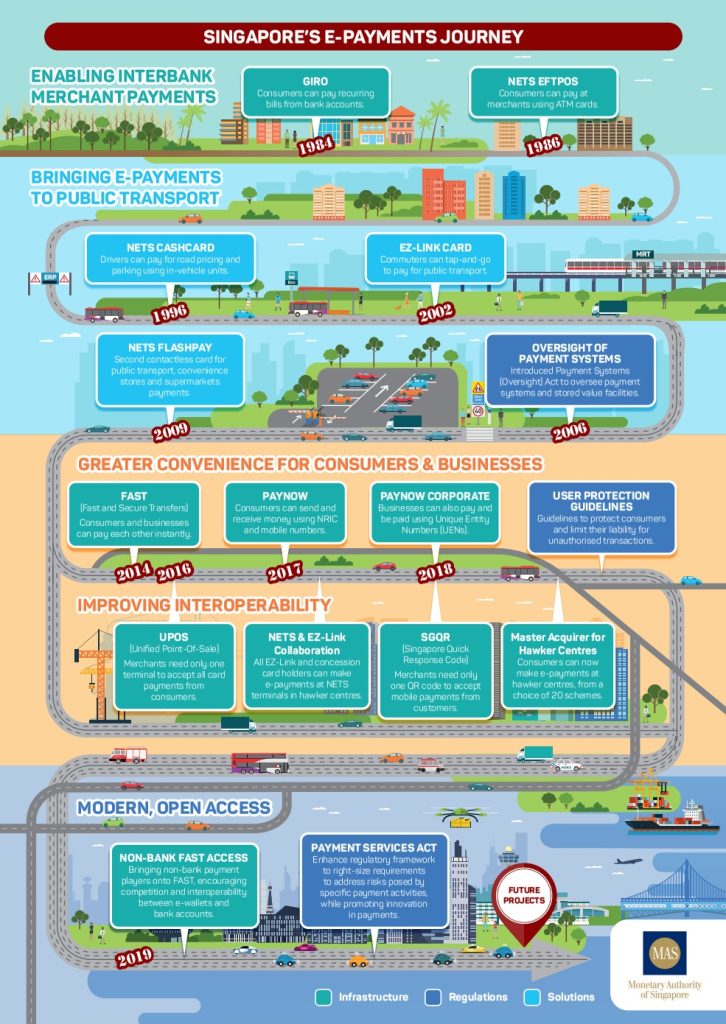
Why New Ecommerce Sellers Should Embrace QR Payments
If you have been only selling on Shopee all this while, and want to venture into setting up your own ecommerce store, then accepting QR payments can make your business stand out in a crowded market.
One big win is faster checkout. Your customers don’t have to dig around for their credit card numbers. Instead, they simply scan your QR code, pay instantly, and move on. This speed can improve customer satisfaction and reduce abandoned carts.
Another key advantage is cost. QR payments like PayNow don’t charge the expensive gateway fees that credit card payments impose. Keeping more of your sales revenue is a boost all new sellers need.
On top of that, QR codes work flexibly across sales channels. Whether you’re selling on your website, at pop-up events, or through social media, you can accept QR payments without complex setups.
Understanding QR Code Payments
What is a QR Code Payment?
Just in case you’ve been in isolation since the pandemic, a QR code payment starts with a simple square pattern that your phone’s camera can easily read. This pattern, or QR code (the QR stands for Quick Response), encodes payment details like who to pay, how much, and optionally what the payment is for. When you scan it with your banking or wallet app, it translates the machine-readable code into a payment request.
There are two main types of QR codes you might come across in payments, static and dynamic:
- A static QR code always shows the same payment details. That means it usually has a fixed amount or no amount at all. The buyer can then enter how much they want to pay. This type is handy for hawkers, cafes, or retail stores that want a simple, permanent QR code on display.
- A dynamic QR code is more flexible. Each time you generate one, it can contain a unique amount and invoice number specific to that transaction. This is especially useful for ecommerce or freelance sellers who want to link each payment to an order or invoice automatically. It helps with tracking and makes reconciliation easier, since every payment request is distinct.
How QR Payments Work at Checkout
When a customer is ready to pay, they open their mobile banking or wallet app and scan your payment QR code. Their app reads the data encoded in the QR and shows the payment details on the customer’s screen.
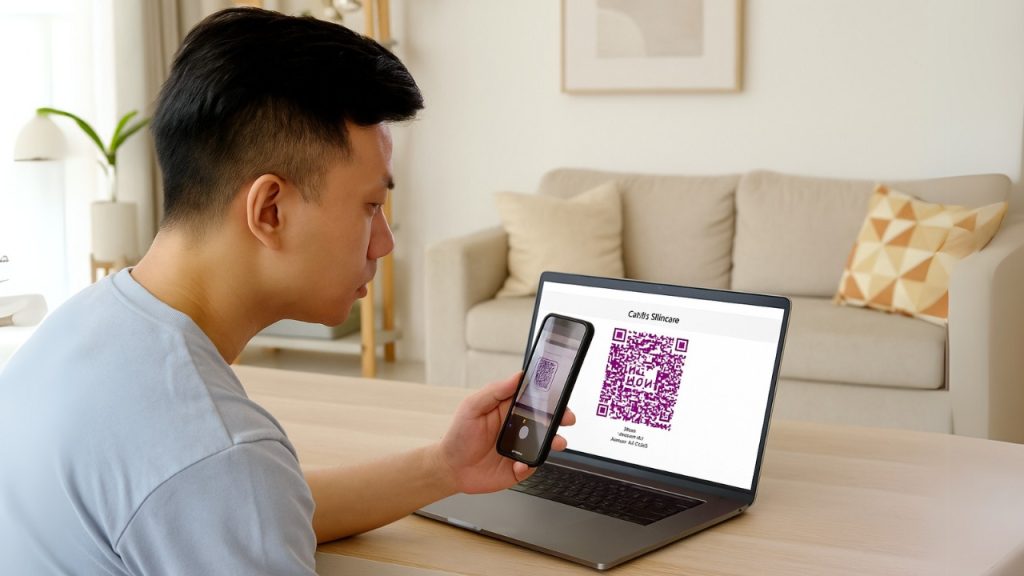
Next comes authentication and approval. The customer confirms the payment by entering their PIN, using fingerprint recognition, or face ID; whatever security method their bank app requires. Once approved, the payment is processed immediately.
The money transfers directly from the customer’s bank account to the seller’s account. In most cases, especially with PayNow, funds arrive instantly or within seconds. This near-real-time transfer helps sellers manage cash flow efficiently without waiting days for payments to clear.
All these steps happen smoothly and securely, allowing both customers and sellers to complete the transaction quickly and with peace of mind.
Key QR Payment Methods in Singapore for Sellers
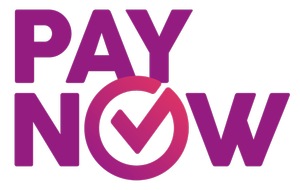
PayNow
PayNow is Singapore’s national peer-to-peer payment system. It’s hugely popular with both individuals and businesses because of its simplicity and wide acceptance. For merchants, PayNow works by using either their UEN (Unique Entity Number) or mobile phone number as the payment destination.
What makes PayNow especially attractive to sellers is that it does not charge transaction fees. That means every dollar you receive goes into your account without a cut taken by intermediaries. It also integrates easily with many ecommerce platforms and payment tools, reducing technical hassle for sellers. Because funds transfer instantly or almost instantly, PayNow helps businesses maintain steady cash flow.

GrabPay
GrabPay is the digital wallet within Grab’s extensive ecosystem, which includes ride-hailing, food delivery, and retail services. This wallet offers another popular way for customers to pay, especially those already using Grab daily.
For ecommerce sellers, accepting GrabPay can unlock access to Grab’s large user base and provide additional opportunities for promotions or loyalty campaigns tied to the Grab app. Integration with ecommerce platforms is becoming more common, making it easier to add GrabPay at checkout. Shoppers enjoy the convenience of using the same wallet for various services, streamlining their payment experience across multiple activities.
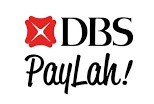
DBS PayLah!
DBS PayLah! is a mobile wallet linked directly to DBS Bank accounts. It works within Singapore’s broader QR code payment ecosystem and supports SGQR standards.
PayLah! is particularly suited to small businesses and offline merchants, such as market stalls and cafes, who benefit from quick, cashless transactions without needing complex equipment. Its seamless integration with the banking system also helps with easier account management and payments reconciliation.
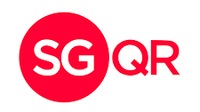
SGQR Unified QR Code Standard
SGQR is Singapore’s national QR code payment standard. Instead of juggling multiple QR codes above for different payment providers, merchants can now display just one SGQR code that customers scan to pay using various apps.
This unified approach simplifies the payment experience for both sellers and buyers. Sellers receive payments from multiple sources—such as PayNow, GrabPay, and PayLah!—through one scan. For shoppers, this reduces confusion and saves time at checkout because they don’t have to hunt for the right QR code.
Complying with SGQR is increasingly important to keep up with payment innovations and meet customer expectations for convenience and speed. Many tools, including SGPayNowQR’s online generator and WooCommerce plugin, create payment codes that follow SGQR standards, helping sellers streamline QR payment acceptance easily.
How Sellers Can Use QR Codes to Accept Payments
Generating QR Codes
When it comes to generating QR codes for your payments, the first step is deciding where the payment will go. You can choose to link your QR code to your business’s UEN (Unique Entity Number) or your mobile number. The UEN is great for registered businesses, as it clearly identifies your company. Using a mobile number is handy if you are a freelancer or running a smaller operation without a formal business number.
Next, you configure the payment amount. For ecommerce sellers, you should embed the payment amount into a dynamic QR code that is generated on the spot. Each code carries a unique amount and reference number related to that particular transaction or order. This kind of code helps you track payments and makes bookkeeping much easier.
Displaying and Sharing QR Codes
Once your QR code is generated, putting it in the right spot is key. For ecommerce sellers, embedding the QR code directly on your checkout page offers a smooth experience. Your customer scans the code while checking out, making payment instant and hassle-free.
If you are transacting face-to-face, such as at a pop-up stall or market booth, you can generate a QR code on your phone and display it to the customer, so they can scan it.
Don’t forget digital sharing options. Sending your QR code through emails, WhatsApp messages, or social media posts is perfect for social commerce and remote orders. Your customers can scan and pay anytime, anywhere, even before receiving goods or services.

Payment Processing and Security Considerations
After the customer scans your QR code and approves the payment, the transaction is completed through their bank or wallet app. Payment processing happens securely on your customer’s side, with their bank handling authentication steps like PIN entry or biometric checks.
Both you and your customer receive immediate confirmation notifications once the payment goes through. This instant feedback brings peace of mind and helps your cash flow, as you know the money is in your account.
A key security feature is that no sensitive payment data ever passes through or is stored on third-party servers, including the tools you use to generate your QR codes. This setup reduces risks of data breaches and keeps your customers’ information safe. Your role is to generate and display the QR code, but the actual payment execution happens securely between banking institutions.
Benefits of QR Payments for Ecommerce Sellers
Cost Savings
One of the biggest draws for ecommerce sellers using QR payments like PayNow is how much you can save. Unlike credit card payments, which often come with gateway fees ranging from 1.5% to 3% per transaction, PayNow transfers your money without charging fees. This means every dollar your customers pay lands fully in your account; no surprises or slimmed-down payouts.
On top of that, tools like SGPayNowQR offer free PayNow QR code generation with no monthly or setup fees. You don’t need to subscribe to expensive services or software just to start accepting payments. This cost-effectiveness is a welcome relief for new or small sellers watching every cent.
Simple Setup and Use
Don’t worry if you’re not technical. Generating PayNow QR codes is straightforward and doesn’t require coding or design skills. With just a few clicks on SGPayNowQR’s online generator or app, you can create a SGQR-compliant code ready to accept payments instantly.
Plus, once the QR code is displayed, customers can pay without delay. The setup process is quick, so you can start accepting payments from the very first day your store is live. This simplicity works well for solopreneurs or small business owners who manage many tasks themselves.

Improved Customer Experience
Customers appreciate fast, known payment methods. QR payments offer a familiar way to pay that most Singaporeans already use in their daily lives. This familiarity breeds trust and reduces hesitation at checkout.
The speed of QR payments also means less waiting around for change or card processing. Whether your customer is shopping online or buying in person, they can complete their purchase with just a quick scan and tap. This smoother checkout builds positive impressions and encourages repeat business.
Flexibility Across Sales Channels
QR payments shine because they work everywhere your business sells. Use them on your online store checkout to capture instant payments. For social commerce, such as Instagram DMs or WhatsApp, sharing your generated QR code makes it easy to collect payments remotely.
All these benefits combined show why QR payments have become a practical and popular choice for Singapore ecommerce sellers who want efficient transactions without added costs and hassles.
Step-by-Step: Generating and Using PayNow QR Codes with SGPayNowQR
Online QR Code Generator
Creating your PayNow QR code online is straightforward with SGPayNowQR’s free tool.
- First, visit the website and choose the payment type: either your business UEN or your mobile number. This tells the system where the funds should go.
- Next, you enter the payment details. If you want to specify an amount, you can do so here. Alternatively, leave it blank for flexible amounts.
- Adding a payment reference like an order number helps keep your records tidy and makes reconciliation easier later on.
- Once you fill in these fields, just click “Generate.” The system instantly creates a SGQR-compliant QR code that you can download as an image file. There’s no need to create an account or sign up, so you can start using your QR code immediately.
This online generator simplifies what would otherwise be a technical process, making it accessible for sellers who want an easy and fast way to accept PayNow payments.
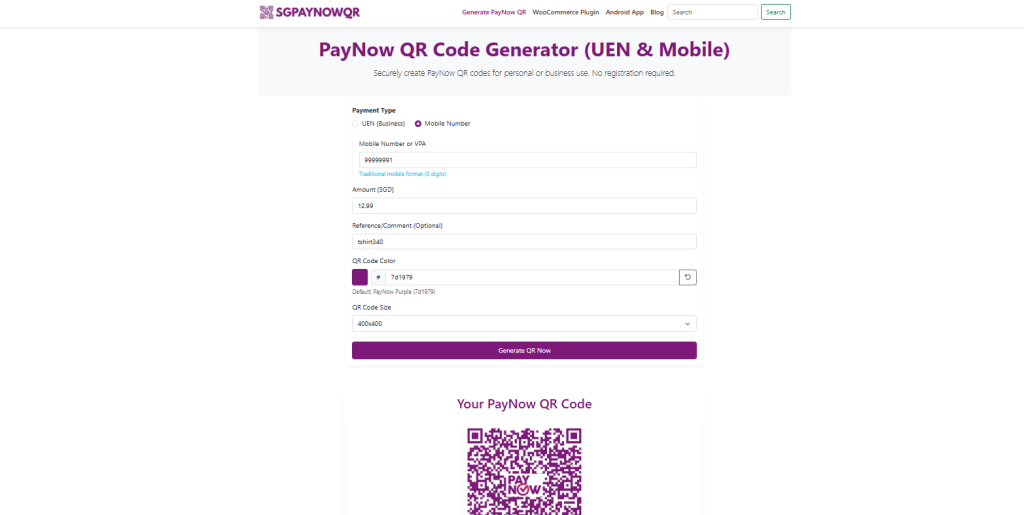
WooCommerce Plugin for Ecommerce Sellers
If your store runs on WooCommerce, adding PayNow as a payment method is even easier with the SGPayNowQR plugin. Installing this plugin lets you embed PayNow directly on your checkout page.
First, download and install the plugin from the WordPress repository or SGPayNowQR website. Then, enter your business UEN or mobile number into the plugin settings. You can customise the payment instructions or display options if needed.
The big advantage here is avoiding ongoing gateway fees that card payments often charge. Every transaction through PayNow goes straight into your account without deductions, helping your business keep more of what you earn.
Because the plugin integrates smoothly with your checkout flow, your customers have a seamless experience. They see the PayNow option alongside usual payment methods, scan the displayed QR code, and confirm payments instantly. This direct connection also reduces payment errors and speeds up order processing.
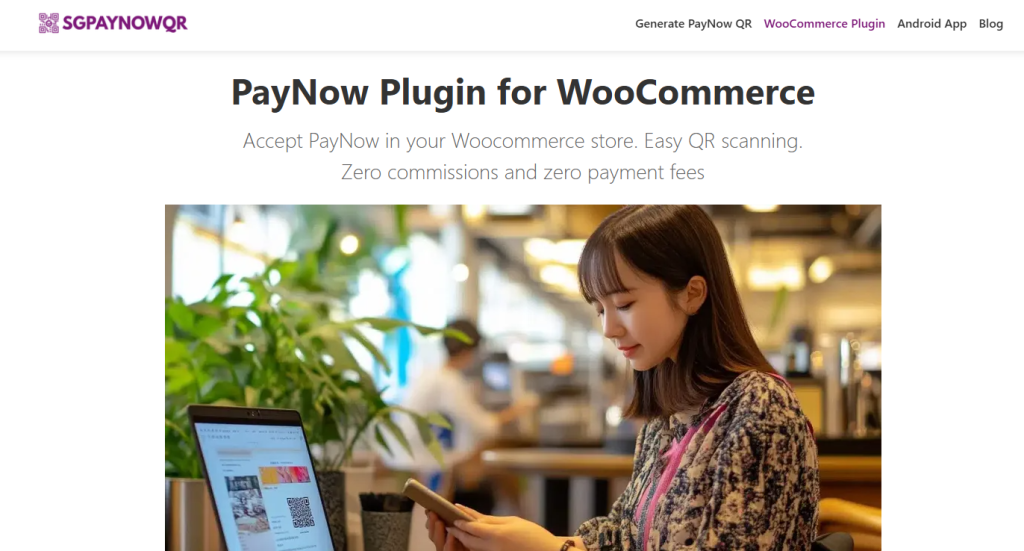
Mobile QR Code Generation Using Android App
For sellers who move around at pop-up markets, events, or client visits, the SGPayNowQR Android app is a handy companion. You can generate PayNow QR codes on the go, without needing a laptop or internet browser.
Start by downloading the app from Google Play. The setup is quick: input your UEN or mobile number once, then you’re ready to create QR codes anytime.
The app supports dynamic QR codes, which means you can enter the exact sale amount for each transaction as you create the QR code. This is perfect for variable sales, such as at food stalls or service appointments, where amounts aren’t fixed.
Managing multiple payment accounts is also simple. If you have more than one business or personal account, you can switch between them in the app and generate QR codes linked to the right destination. That way, your payments stay organized no matter where you sell.
All these features combine to make payment collection fast, flexible, and free from technical hassle when you’re out and about.
Real Results: How Sellers Benefit from QR Payments
Case Studies of Singapore Sellers Using PayNow QR Codes
Take the example of a local online retailer specialising in skincare products. Before adopting PayNow QR codes on their WooCommerce site, their checkout process involved credit card payments with gateway fees eating into their margins. After integrating PayNow via SGPayNowQR, they noticed a smoother payment flow and faster checkout times. Customers appreciated the familiar and quick PayNow option, and it now makes up 40% of all orders.
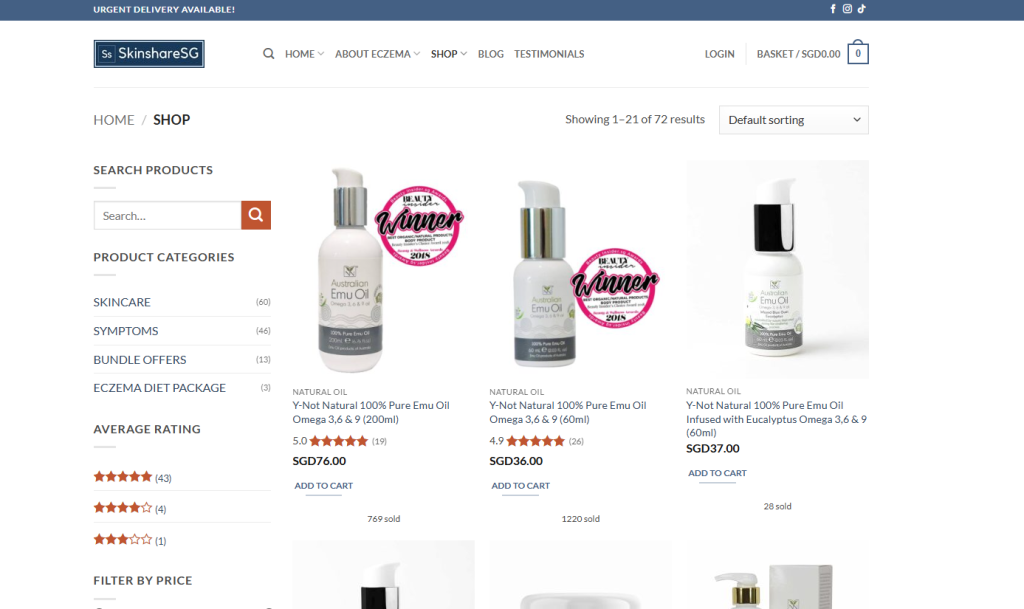
For freelancers such as tutors or graphic designers, the benefits are clear too. By sharing a PayNow QR code linked to their mobile number, they receive payments instantly after sessions without relying on invoicing platforms that charge fees or cause delays.
Pop-up vendors at markets and events also find QR payments a game changer. Instead of handling cash or card machines, they print and display PayNow QR codes generated from the SGPayNowQR Android app. This speeds up transactions, reduces cash handling errors, and eases off the mental load during busy sales days.
Start Accepting QR Payments Today
Ready to get started? Here’s how you can take the first steps now:
- Try generating your first PayNow QR code using our free online generator. No signup is required, and you’ll have a SGQR-compliant code ready in moments.
- If you run an ecommerce store on WooCommerce, add PayNow as a payment option with our plugin. It’s designed for smooth checkout integration and fee-free payment processing.
- For sellers who handle in-person transactions, download the SGPayNowQR Android app. You can generate PayNow QR codes on the go, perfect for pop-up markets, events, or client visits.



